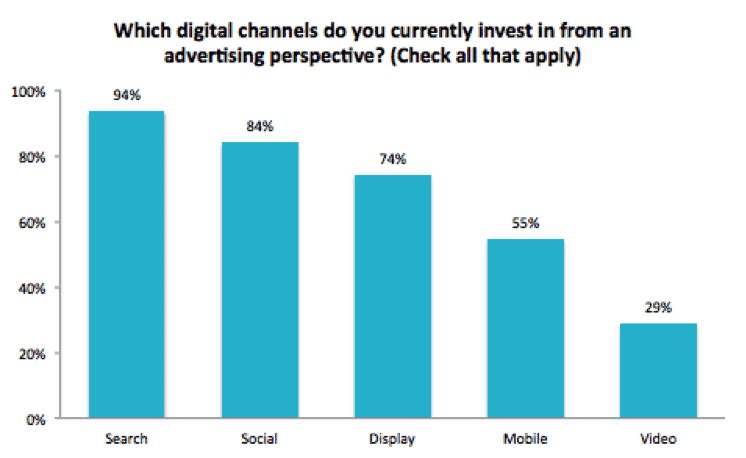Today’s traveler knows a borderless existence ‒ not necessarily in the places he or she travels, but rather, in how they research, plan, and book getaways. The internet has made it possible for the modern consumer to become, in essence, his or her own travel agent.
As published in Skai’s Digital Travel Transformation white paper, digital has spurred a complete overhaul in a marketer’s approach to travel. The fluidity and fragmentation in today’s market presents new challenges for travel brands to connect with consumers.
To dig further into these challenges, Skai recently conducted a survey of global travel marketers which revealed several key insights.
Catch me if you can
A majority of marketers (71%) cited attribution and customer journey mapping as one of their biggest challenges ‒ not surprising when we consider all the options available to consumers.
The advertisers we surveyed are predominantly using search, social, and display as a means to reach potential travelers, with the biggest budgets being directed to search.
Source: Skai 2016 Digital Marketing Benchmark Survey for Travel
Within social, emerging formats like Instagram are grabbing the attention of brand and consumers alike. 71% of surveyed travel marketers see Instagram as one of their top social media outlets, but Facebook still takes the lionshare of interest with 97% reporting it as a top destination for advertising.

Source: Skai 2016 Digital Marketing Benchmark Survey for Travel
Setting aside budget for experimentation and innovation will help marketers test the viability of these new ad opportunities and track the early returns before heavy competition sets in.
For brands, the primary challenge comes with stitching this all together to meet customers at the right moments and properly attributing credit across the customer journey.
On the road
One area where investments seem to be growing is mobile, with 80% of marketers reporting plans to “somewhat” or “significantly” increase mobile budgets in 2016. Currently, 45% of those surveyed indicted mobile accounts for 1-10% of their advertising spend, but 39% indicated up to 25% allotted toward mobile. The mobile conversion numbers trend similarly with 49% of survey participants indicating up to 10% conversions coming from mobile devices.
Even with increased investment, marketers still find mobile to be a challenge and have hopes to improve mobile and cross-device experiences for consumers. As the experience improves, expect mobile conversions to grow in response.
In the US, eMarketer predicts that 52% of travelers who book trips via digital means will do so using a mobile device in 2016—up from 44% in 2015. It’s likely that mobile apps will largely spur this trend. 74% of the travel marketers we surveyed confirmed their brand does have a mobile app.
Up in the air
In addition to measurement and mobile, 61% of travel marketers noted challenges with proving ROI across channels. As digital budgets are increasing, travel marketers must be able to show the impact of their investments and the value their programs are providing.
For the vast majority of surveyed travel brands, the primary goal of their online marketing programs is performance based and direct response driven, such as generating leads or conversions. The beauty of digital is its measurability, but with more advertising opportunities available, marketers must be able to justify adding new channels and formats to the mix while maintaining or even growing budgets elsewhere.
Having an attribution model that values multiple touch points in the path to purchase —not just the last exposure before action but also the influencing moments— will be key, as exemplified by the first finding.
Tying it all together: Emotion and Agility
As a travel marketer, you must be as emotionally attached to the travel dream as your customers, but being there at the right apertures in the customer journey can be difficult. In order to keep up, you have to fortify yourself, remain nimble, and constantly adapt to fluctuating market trends, technologies, and opportunities. By embracing the opportunities within digital armed with an agile marketing mindset, expect your marketing programs to really take flight. To learn how to simplify and personalize the customer journey, download our latest white paper, Digital Travel Transformation: Improving Your Marketing in Today’s Changing Travel Landscape.
Click here to learn more about Skai’s solution for and success with travel marketers.
Survey Methodology
The survey data analyzed in this report reflects the responses from 31 global travel marketing professionals across sub-categories such as OTAs, Hotels & Resorts, Airlines, Transportation, Rentals, Tourism and more. The survey was delivered and responses were compiled and analyzed during Q1 of 2016. All survey responses were completed anonymously.

